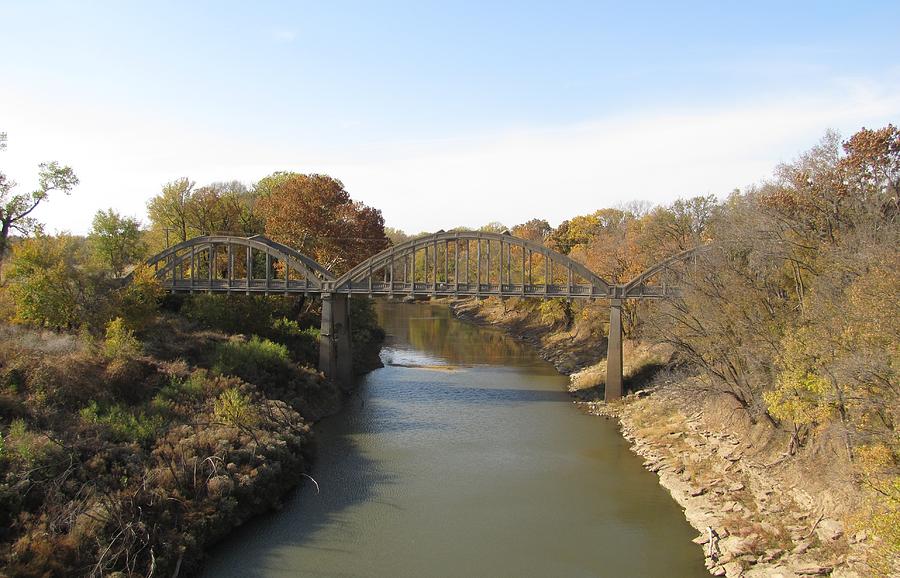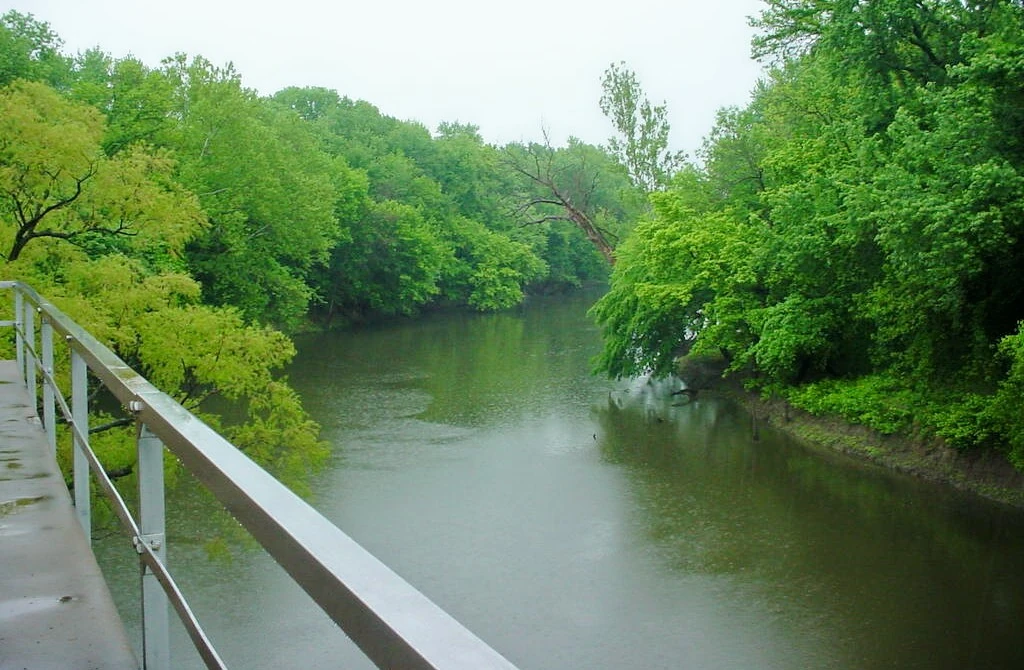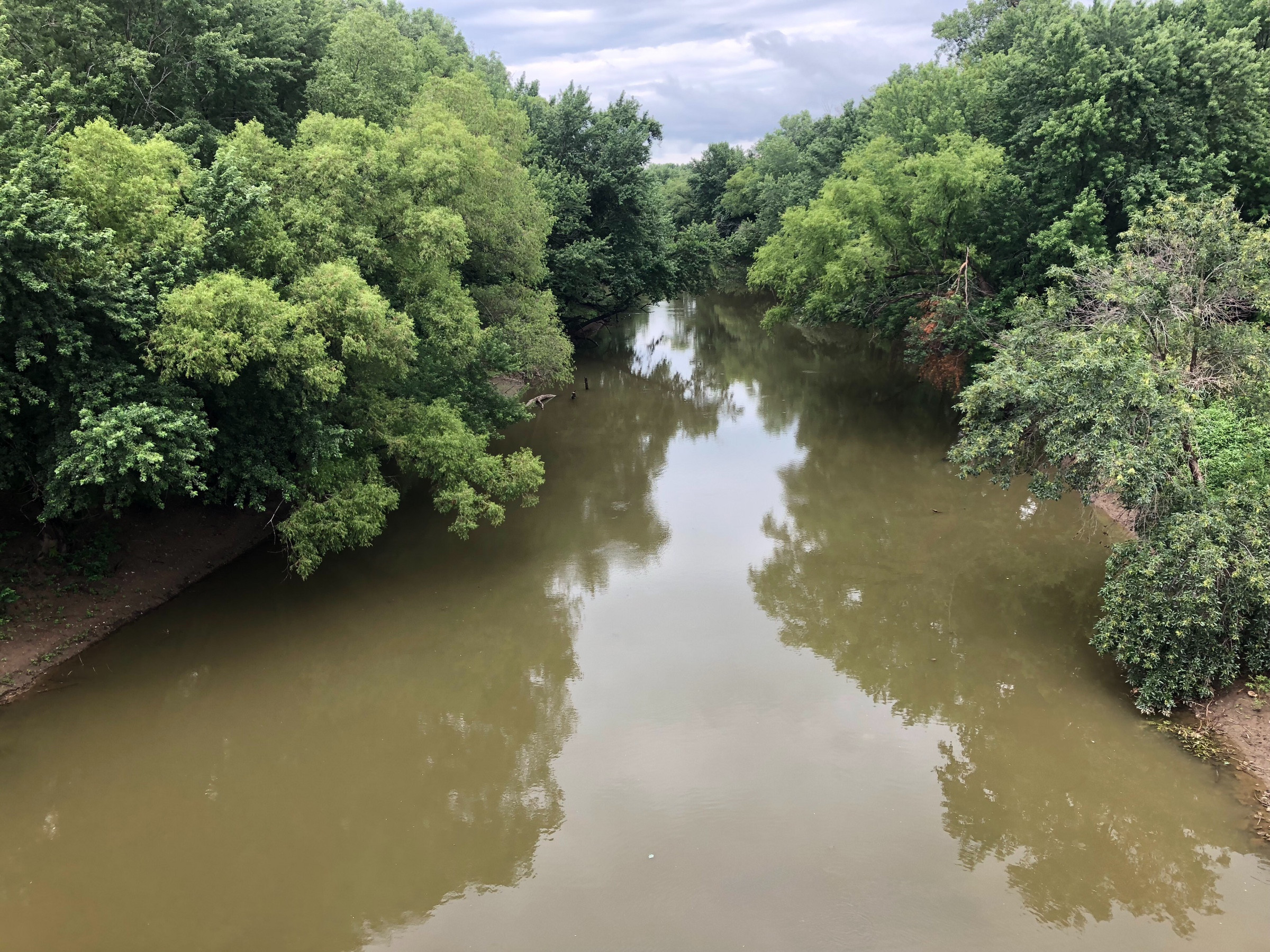
The Emerald Vein: Tracing the Timeless Currents of the Verdigris River
In the heart of America, where the expansive plains meet the gently rolling foothills, a river flows with a name that whispers of ancient chemistry and a vibrant, enduring spirit. The Verdigris River, a waterway whose very name evokes the greenish-blue patina of weathered copper, carves a serpentine path through southeastern Kansas and northeastern Oklahoma, carrying with it a rich tapestry of history, ecology, and human endeavor. Far from being merely a line on a map, the Verdigris is a living chronicle, a natural artery that has shaped landscapes, nourished civilizations, and witnessed the relentless march of time.
The name "Verdigris" itself is a captivating riddle. Derived from the Old French "vertegrez," meaning "green of Greece," it refers to the greenish-blue pigment formed by the corrosion of copper. But why bestow such a name upon a river winding through the American heartland? Some historians posit it reflects the greenish tint of its waters, perhaps from mineral deposits, the proliferation of algae during warmer months, or even the reflection of the lush riparian vegetation. Others suggest it was a poetic descriptor for the verdant banks that line its course, particularly observed by early French explorers whose language gifted the river its unique moniker. Regardless of its precise origin, the name imbues the river with an immediate sense of mystery and character, setting it apart from its more prosaically named counterparts.
The journey of the Verdigris begins modestly in the eastern Kansas prairie, in Chautauqua County. From its headwaters, it gathers strength as it flows southeastward, meandering through a landscape shaped by both natural forces and human hands. It passes through towns like Neodesha and Coffeyville in Kansas, then crosses into Oklahoma, where it flows past communities such as Claremore and Catoosa before finally merging with the Arkansas River near Muskogee. This confluence is significant, as it links the Verdigris to the vast Mississippi River system, connecting it to the Gulf of Mexico and, historically, to a wider world of trade and exploration.

For millennia before European contact, the Verdigris River was the lifeblood of indigenous peoples. The Osage Nation, in particular, held the river and its surrounding lands as central to their ancestral domain. "The river was our highway, our larder, and our sacred place," an elder might have recounted, highlighting its multifaceted importance. The fertile bottomlands provided rich soil for agriculture, while the river itself teemed with fish, and its banks offered abundant game. It was a source of spiritual sustenance, a place for ceremony, and a vital transportation route. The Osage, with their deep understanding of the land, lived in harmony with the Verdigris, their culture inextricably woven into its ebb and flow. Archaeological evidence still surfaces along its banks, offering glimpses into their enduring legacy.
The first Europeans to document the Verdigris were French explorers and fur traders in the early 18th century. Bernard de la Harpe, in 1719, is often credited with one of the earliest detailed accounts, venturing into the region in search of trade routes and resources. Following in his wake, French Canadian traders like the Chouteau family established trading posts along the river in the late 1700s and early 1800s. Auguste Chouteau’s post, near present-day Claremore, Oklahoma, became a significant hub, facilitating trade between the Osage and European goods, primarily beaver pelts and other furs. These outposts marked the initial, tentative steps of European influence, gradually shifting the region’s dynamics.
As the United States expanded westward in the 19th century, the Verdigris became a frontier landmark. Perhaps one of its most famous chroniclers was Washington Irving, who accompanied a U.S. Army expedition in 1832. His vivid travelogue, "A Tour on the Prairies," offers a romanticized yet insightful glimpse into the untamed beauty of the region. Irving described the Verdigris as flowing "through a country beautifully diversified with woods and prairies, and watered by innumerable small streams that meander through the rich bottom lands." His accounts brought the remote landscapes of the American frontier to a wider audience, painting a picture of wild buffalo herds, dense forests, and the quiet majesty of rivers like the Verdigris.
The 19th and early 20th centuries brought significant changes. Steamboats, though challenging to navigate due to fluctuating water levels, occasionally plied the lower reaches of the Verdigris, transporting goods and people. The discovery of oil and natural gas in the region, particularly around Coffeyville and Neodesha, transformed the river’s banks into bustling industrial zones. Refineries and drilling operations sprung up, bringing prosperity but also, inevitably, environmental challenges. The legacy of this industrial boom remains, with many towns along the river having roots in the energy sector.
Today, the Verdigris River continues to play a vital economic role, albeit a different one. Its fertile floodplains remain crucial for agriculture, supporting crops like corn, soybeans, wheat, and cattle ranching. However, perhaps its most significant modern economic contribution is its integration into the McClellan-Kerr Arkansas River Navigation System. This ambitious feat of engineering transformed the lower Verdigris into a navigable waterway, complete with locks and dams, allowing barges to transport goods from Tulsa (via the Port of Catoosa on the Verdigris) to the Mississippi River and the Gulf of Mexico. This connection has made northeastern Oklahoma an inland port, significantly impacting regional and national commerce. "The Port of Catoosa, situated on the Verdigris, is a testament to the river’s enduring utility," states a representative from the port authority, "connecting America’s heartland to the global economy."
Ecologically, the Verdigris River is a diverse and dynamic ecosystem. Its waters support a variety of fish species, including catfish, bass, crappie, and gar, making it a popular destination for anglers. The riparian corridors along its banks provide critical habitat for a wide array of wildlife, from white-tailed deer and wild turkeys to beavers, otters, and various migratory bird species. During migration seasons, the river acts as a crucial flyway, with waterfowl and shorebirds resting and feeding along its shores. Bald eagles, once endangered, are now a more common sight, soaring majestically above the emerald waters.
However, like many rivers in agricultural and historically industrial regions, the Verdigris faces environmental pressures. Agricultural runoff contributes nutrients and sediment, affecting water quality. Historical oil and gas exploration left behind scars, though ongoing remediation efforts are working to heal them. Invasive species, such as zebra mussels, pose a constant threat to native ecosystems. Local conservation groups, state agencies, and passionate individuals are continuously working to monitor water quality, restore riparian habitats, and educate the public about the importance of protecting this precious natural resource. Their efforts are crucial in maintaining the delicate balance of the river’s ecosystem.
Life along the Verdigris is inextricably linked to its temperament. Communities have learned to respect its power, particularly during periods of heavy rainfall when the river can swell rapidly, leading to significant flooding. These floods, while destructive, also deposit rich silt onto the floodplains, renewing the agricultural land. Residents of towns like Coffeyville and Neodesha have countless stories of the river’s fury and the resilience required to rebuild and recover. This cyclical pattern of flood and renewal is a defining characteristic of river life, fostering a strong sense of community and interdependence.

Recreation also plays a significant role in the river’s modern identity. Kayakers and canoeists enjoy its quieter stretches, reveling in the serene beauty and the chance to observe wildlife up close. Fishermen cast their lines from boats and banks, seeking the thrill of the catch. Hunting in the surrounding bottomlands, particularly for deer and waterfowl, remains a popular pastime. The river provides a natural escape, a place for solace and connection to the wild, offering a stark contrast to the demands of modern life.
In its meandering journey from the Kansas prairie to the Arkansas River, the Verdigris is more than just a body of water; it is a profound testament to the enduring power of nature and the interwoven narratives of human history. It bears witness to the ancient footsteps of the Osage, the adventurous spirit of French explorers, the romantic prose of Washington Irving, and the industrial might of a developing nation. Today, it continues to serve as an economic artery, an ecological haven, and a source of recreation and community identity. The emerald vein of the Verdigris River, with its evocative name and timeless currents, flows onward, a silent, powerful guardian of America’s heartland, forever telling the story of the land and the people it sustains.


